Botz Tenmoku Glaze: Everything You Need to Know for Stunning Ceramic Results

If you’ve been exploring rich, dark glazes with depth and character, then Botz Tenmoku glaze deserves a spot in your pottery studio. Known for its historic roots, rich iron content, and stunning range of color effects, Tenmoku glaze is a classic that potters have admired for centuries. Whether you’re a beginner looking for a trustworthy glaze or an experienced potter chasing new creative possibilities, this article will help you understand what makes Botz Tenmoku so special — and how to use it to create unique, durable pieces.
What Is Botz Tenmoku Glaze?
Tenmoku glazes originated during the Song Dynasty in China and were later embraced in Japanese and Western studios for their rich, dark hues and glossy sheen. “Tenmoku” (or “Jian ware” in Chinese tradition) traditionally refers to deep, glossy bowls that highlight tea’s color.
Botz Tenmoku glaze is a German-imported, modern version of this ancient glaze style. It comes pre-mixed in practical sizes — often 200 ml or 800 ml — and can be brushed, dipped, or sprayed directly onto bisque-fired ceramics. The glaze contains iron, which gives it its distinctive browns and deep blacks. Firing this glaze under the right conditions can produce gorgeous effects like hare’s fur streaks, shimmering oil-spot patterns, and rich reddish-brown tones.
Distinctive Characteristics of Botz Tenmoku
What makes Botz Tenmoku glaze so sought after? A few key qualities set it apart:
-
Rich Iron Content:
Tenmoku glaze contains a high amount of iron oxide, responsible for its classic dark color. Depending on the thickness of the glaze and your firing process, you can achieve anything from warm brown tones to glossy near-black surfaces.
-
Textural Variation:
Unlike flat, uniform glazes, Tenmoku glazes produce subtle variations in texture and color. Thin areas may show reddish-brown tones, while thicker sections produce rich ebony or deep oil spots.
-
Multi-Use Application:
Beyond its aesthetic appeal, Botz Tenmoku is food-safe and highly durable. Once properly fired, it can be used on cups, tea bowls, plates, vases, and other functional pieces that require both style and strength.
Applying Botz Tenmoku Glaze Like a Pro
Applying Tenmoku glaze is straightforward, but a few best practices will help you get optimal results:
-
Mix Thoroughly:
Always stir the glaze well before use. Iron particles can settle at the bottom, and uneven mixing can lead to inconsistent color or blotchy surfaces.
-
Application Methods:
Tenmoku can be brushed, dipped, or sprayed. Dipping is quick and gives uniform coverage, while brushing can produce subtle texture. Spraying allows for very thin coats, which can reveal intricate details in the clay body beneath.
-
Layers and Drying Time:
Typically, two to three coats produce a rich glaze layer. Let each coat dry before applying the next — especially if you want to prevent cracks or uneven buildup.
-
Dry Completely Before Firing:
Allow the glaze to dry for at least 24 hours. Rapid drying can cause micro-cracks and lead to defects during the firing process.
Firing Process: Achieving the Perfect Tenmoku Effect
Your firing process is where Tenmoku glaze truly comes alive. Understanding temperature and kiln atmosphere will help you control the final outcome.
-
-
Around 1220°C, you’ll get a satiny dark-brown finish with subtle variations.
-
Around 1250°C, you’ll achieve richer browns and medium sheen.
-
Around 1280°C, the glaze becomes glossier and may reveal dark, glassy spots or subtle reddish hues.
Temperature Range:
Fire your Tenmoku glaze between 1220°C and 1280°C (Cone 6 to Cone 9).
-
-
Soak Time:
A soak period of 20–30 minutes at top temperature will encourage a smoother, more even glaze finish — especially for pieces like tea cups and bowls.
-
Kiln Atmosphere:
Tenmoku can be fired successfully in both oxidation and reduction kilns. Reduction enhances the glaze’s depth and intensifies color variations, while oxidation yields a more even, chocolate-brown surface.
Troubleshooting Common Issues
As with any iron-rich glaze, Tenmoku can present a few challenges — especially for first-time users. Here are some common issues and their solutions:
-
Pinholes and Bubbles:
Make sure the glaze is thoroughly stirred before application and that the pieces dry completely before firing.
-
Crawling or Glaze Runoff:
Avoid applying the glaze too thickly, especially on vertical surfaces. Adjusting the number of coats or thinning the glaze with water can help.
-
Patchy or Dull Color:
Check that your firing temperature is correct. Under-firing can produce a matte or uneven surface, while over-firing can cause the glaze to lose its distinctive color.
Creative Variations and Combining Glazes
If you’d like to push your Tenmoku glaze into new creative territory, here are a few techniques:
-
Layering with Transparent or White Glazes:
Applying a thin top coat of transparent glaze can add depth and gloss.
-
Combining with Other Iron-Based Glazes:
Blend Tenmoku with other Botz glazes to produce dynamic color gradients and visual complexity.
-
Experimenting with Cooling Rates:
Slower cooling can encourage crystal formation and produce subtle, metallic effects. Document each batch carefully for future replication.
Caring for Tenmoku Ceramics
Your Tenmoku pieces will look beautiful for years — especially with proper care:
-
Food and Microwave Safety:
Tenmoku glazes fired at the recommended temperatures are food-safe and microwaveable. Avoid extreme temperature shocks, like putting a hot bowl into cold water.
-
Cleaning and Storage:
Wash by hand with mild soap. Avoid using harsh abrasives, which can dull the glaze’s surface.
Conclusion
Botz Tenmoku glaze is a timeless classic that can add depth, character, and a touch of tradition to your ceramic work. Whether you are crafting a single chawan or a full dinner set, this glaze is as practical as it is beautiful. By carefully selecting your application method, mastering your firing process, and embracing creative variations, you can make pieces that truly stand out — and keep Tenmoku’s rich legacy alive in your pottery.
Ready to try Botz Tenmoku? Order your glaze from reputable suppliers like Porcelaire.com or visit your local ceramics shop — and don’t forget to experiment and have fun with the process. Every firing is a new opportunity for a unique outcome, so embrace the surprises and let Tenmoku inspire your creativity!
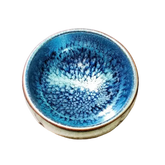


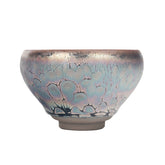
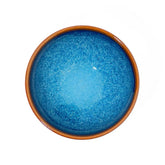
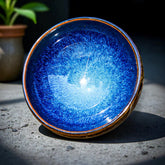
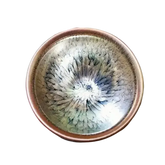
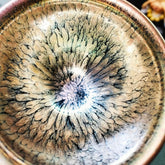


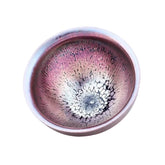


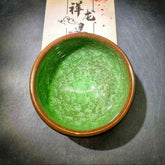
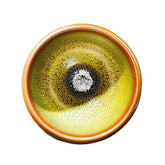
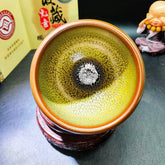
Leave a comment
Please note, comments need to be approved before they are published.